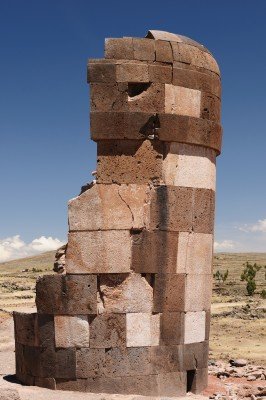Where To Stay In PuNO
The Department of Puno is best known, from a tourism point of view, as home to the Peruvian side of Lake Titicaca. At a breathless 3,812 m (12,507 ft) above sea level, it is the highest lake in the world with regular passenger boat services. It is also South America’s largest lake … and the largest body of water over 2,000 m (6,562 ft) above sea level in the world.
Sunset over Lake Titicaca from Suasi Island.
Dotting the luminous lake are islands, some inhabited by people whose way of life has changed little in centuries.
These tough, self-sufficient highlanders have recently opened their doors to travellers who want to spend a night or more staying with a family.
There is no better way to experience the lake than to watch a sunset and sunrise surrounded by its chilly waters.
For that reason, we encourage visitors to spend time on Suasi, a serene and tranquil privately-owned island, away from the major tourism routes.
The city of Puno, capital of its department, sits on a bay at the western end of Lake Titicaca and is the main tourism centre.
It is a cold and drab city: its charm lies in the lake views, its folklore … and the constant flow of foreign visitors attracted by both.
Upmarket visitors arrive or depart in the deluxe Andean Explorer train service that plies the Cusco - Puno - Arequipa route, at low speeds … but in extreme comfort.
Puno Archaeology:
The chullpas (funerary towers) of Sillustani are the area’s most-visited archaeological site. They lie 34 km (21 miles) northwest of Puno city and are often included on the way to or from Juliaca Airport.
Remains of a Sillustani chullpa.
These chullpas were built by the Aymara-speaking Colla people who dominated the area before and during the expansion of the Incas (around A.D. 1400) and can be seen in several places; those at Sillustani are the best preserved, most dramatic and easiest to visit.
The cylindrical towers reach nearly 12 m (40 ft) in height and are made of carved, perfectly-fitted, stone blocks.
Each chullpa housed a family group entombed with food, clothing and other belongings (there are no remains).
The towers’ circular shape, with the top being wider in diameter than the base, remains a puzzle for archaeologists. Each tower had a small entrance facing east, which visitors can peak into.
The site adjoins Lake Umayo, known for a variety of highland aquatic birdlife.
The Ceremonial Centre of Inka Tuinuhuire (also spelt Tuinuhuiri) is located 30 minutes’ drive south of Puno City, near the village of Ichu, and with impressive views over Lake Titicaca.
It is made up of sandstone walls, stone blocks (monoliths) carved into human form, and terraces. It is thought to date back to the Pukara Culture (500 BC - 400 AD), but as the name suggests, was later incorporated into the Inca political and religious system.
It still has a spiritual significance for locals, who give offerings to Pachamama (Mother Earth) here as part of the local Carnival.
Lunch & wine overlooking Lake Titicaca.
The best hotels in Puno city are to be found away from the centre, on the shores of the lake.
One in particular deserves a mention: Titilaka, an hour’s drive from Puno on the road to Bolivia, is a truly luxury experience … with prices to match!
Example of puna landscape in Department of Puno.
Away from the Lake, much of Puno Department’s geography is classified as puna - a high treeless plateau with a tundra climate.
However, like the Department of Cusco directly to the north, as one descends in altitude, the temperature increases and the ecology becomes that of Amazon Rainforest, with rivers making their way from the highlands into the Amazon basin.
Much of Puno’s jungle is protected in the Bahuaja-Sonene National Park and Tambopata National Reserve, both of which spread into Madre de Dios. This area is well off-the-beaten-path, but can be experienced on our Tambopata River Rafting tour.





